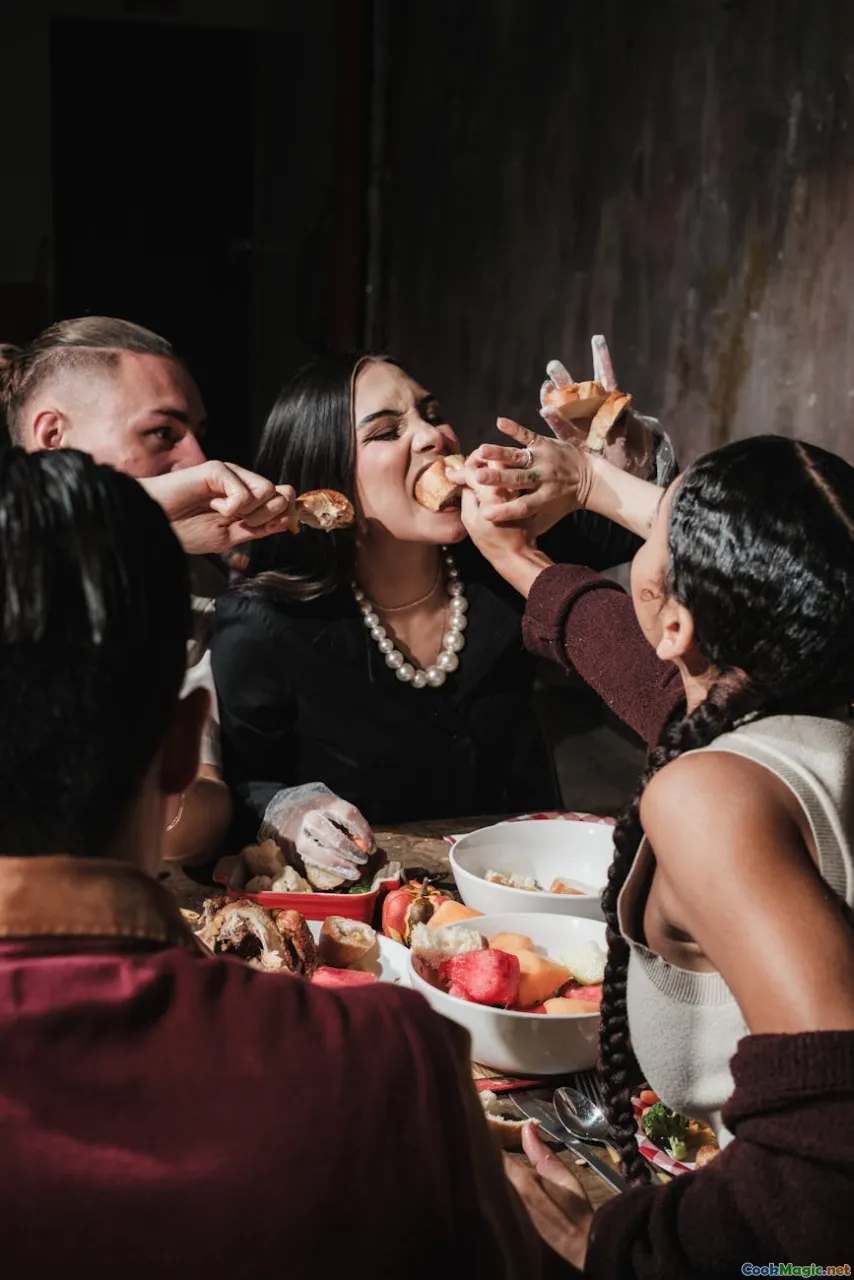Creating Community Through Food Events
8 min read Discover how food events foster connection, celebrate culture, and build lasting communities through immersive culinary experiences around the world. June 14, 2025 09:00
Creating Community Through Food Events
Imagine walking into a bustling marketplace where the air is thick with the irresistible aroma of roasting spices, freshly baked bread, and sizzling skewers. The vibrant colors, the laughter, the shared stories over steaming bowls—these moments are more than just sensory delights; they are the heartbeat of community. Food events, fairs, and festivals are powerful catalysts that transcend mere sustenance, transforming into dynamic spaces where culture, history, and human connection intertwine.
The Power of Food as a Cultural Connector
Food is universally recognized as a language that speaks across borders. It embodies tradition, history, and identity. When people gather around a table—be it at a street fair in Marrakech, a harvest festival in Iowa, or a seafood carnival in Bangkok—they are participating in a ritual that reinforces belonging.
For example, the Mardi Gras in New Orleans is renowned not just for its parades but for its communal feasting on king cake and gumbo—a celebration rooted in Louisiana’s rich cultural tapestry of French, African, and Caribbean influences. These culinary traditions serve as living history, passed down through generations, and shared openly in communal settings.
Historical Roots of Food Festivals
Historically, food festivals originated as harvest celebrations marking the bounty of the land, a time to give thanks and share abundance with neighbors. In medieval Europe, harvest festivals like Lammas involved community feasts that fostered cooperation and gratitude.
In Asia, the Mid-Autumn Festivalwith mooncakes symbolizes familial unity and cultural heritage. In Africa,Yam Festivals celebrate agricultural cycles and community resilience. These events were not only about food but about reinforcing social bonds, passing on stories, and affirming cultural identities.
Creating Spaces for Connection and Inclusion
Modern food festivals continue this tradition, evolving into inclusive spaces that welcome diverse communities. They serve as platforms for cultural exchange, breaking down stereotypes and fostering understanding.
Take the Taste of Torontoor theMelbourne Food and Wine Festival—these events showcase global cuisines, allowing attendees to explore unfamiliar flavors while sharing a common experience. The sensory journey—from the spicy warmth of Thai curry to the delicate sweetness of French pastries—becomes a bridge that connects people regardless of background.
Personal Stories: Food as a Catalyst for Friendship
Many organizers and attendees share stories of how food events transformed their social lives. I recall volunteering at a local multicultural food fair, where I watched a young girl from Syria sharing her grandmother’s baklava with a retired teacher from Italy. The exchange of recipes, smiles, and stories broke language barriers, forging a friendship rooted in shared culinary appreciation.
Similarly, community potlucks in neighborhood parks often turn strangers into friends, as people bring dishes that tell their personal stories—grandmother’s secret chili, homemade kimchi, or vegan tamales—each bite carrying history, hope, and love.
The Sensory Experience: Savoring Community
Food festivals are multisensory experiences. Imagine the crackle of a street-side fajita sizzle, the vibrant hues of a Mexican mercado, or the fragrant steam rising from a bowl of Vietnamese pho. These sensory details do more than tantalize taste buds; they evoke memories, evoke empathy, and deepen social bonds.
For instance, during the La Tomatina Festival in Spain, the chaos of tomato-throwing is accompanied by communal cheer, laughter, and a shared sense of joy. The messy, exuberant act becomes a metaphor for unity—celebrating imperfections and collective fun.
Techniques for Building Community Through Food Events
Organizing successful community food events requires intentionality and inclusivity. Here are some strategies:
1. Embrace Diversity
Include cuisines from various cultures, encouraging participants to share their culinary heritage. This fosters mutual respect and curiosity.
2. Encourage Participation
Invite community members to contribute dishes, stories, or performances. Co-creation strengthens ownership and connection.
3. Create Accessible Spaces
Ensure venues are welcoming, accessible, and accommodating for all ages and abilities.
4. Incorporate Educational Elements
Cooking demonstrations, storytelling sessions, and cultural workshops deepen understanding and appreciation.
5. Sustain Engagement
Follow up with community potlucks, cooking classes, or online forums to maintain relationships beyond the event.
Innovative Examples: Food Festivals That Build Community
The Curry Festival in Birmingham, UK
Celebrating South Asian cuisine, this festival not only offers a culinary showcase but also features storytelling sessions, dance performances, and cooking classes, creating a holistic cultural experience.
The Night Market in Chiang Mai, Thailand
A nightly gathering that transforms the city into a vibrant tapestry of street food stalls, live music, and local artisans, fostering a sense of nightly community.
The Farmers’ Market in Portland, Oregon
More than a place to buy fresh produce, it’s a hub for local musicians, artists, and community groups, reinforcing local identity and social cohesion.
Personal Reflection: Food as a Heartbeat of Community
From my own travels, I’ve seen how food festivals serve as a mirror to society’s values and resilience. In post-earthquake Haiti, community-led food fairs helped rebuild hope and solidarity. In immigrant neighborhoods worldwide, shared food creates a sense of home away from home.
Food festivals are more than events—they are a testament to our shared humanity. They remind us that at the table, we find common ground, nourish relationships, and celebrate the rich tapestry of human culture.
Conclusion: Embracing the Power of Food to Connect
Creating community through food events is a timeless tradition that continues to evolve. As we gather around tables, share stories, and savor flavors, we weave threads of understanding, empathy, and belonging. Whether it’s a small neighborhood potluck or a grand international festival, every bite and every shared moment contributes to a more connected, compassionate world.
So next time you attend a food festival, remember—you’re not just tasting delicious dishes; you’re participating in a centuries-old tradition of unity, resilience, and celebration. And in doing so, you become part of a global community, one flavorful experience at a time.









